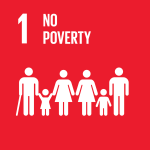With the buzz of Fashion Week in the air, I am feeling nostalgic for the days when buying an outfit was something done with care. Fashion has become more affordable, and we have more of it. But the actual costs are much higher, and much more devastating than we realize.
The increased production of clothes requires more natural resources to grow crops like cotton or for livestock to produce wool, cashmere or leather. This puts more stress on our forest, land and water resources. Chemicals used in dyes and processing are polluting rivers and harming ecosystems and people’s health. Despite fashion being a trillion dollar industry, workers still face low wages and unsafe working conditions. On the opposite side of production is waste. We are wearing clothes for a shorter time, resulting in millions of tons of cast-offs going to landfills each year.
The good news is that things weren’t always like this. It’s only over the last 30 years or so that we’ve seen this shift towards increased volume. This gives me assurance that we are not so stuck in our ways. We can change. But how?
We can check labels. We can do a bit of research before buying. We can ask questions about the material and labour that went into a garment, in the same way that we assess its quality or fit. We want to feel good in our clothes. And we want to feel good about our clothes.
People all over the world have started demanding more of fashion. In recent years, unsafe working conditions in factories around the globe have provoked outrage and Fashion Revolution has us asking #WhoMadeMyClothes? Greta Thunberg has brought our attention to the urgency of climate change, the fragility of our natural resources and the dangers of complacency--demanding action from the world’s political and business leaders. In support of this wave of activism, author Naomi Klein has said, “A fresh generation are marching for revolution and they want to wear clothes that tell a new story. Let’s give it to them.”
And brands have started to respond with corporate responsibility strategies and international commitments. In 2018, more than 90 brands signed the Fashion Industry Charter for Climate Action, committing to reduce greenhouse gas emissions by 30 percent by 2030. In 2019, 32 companies representing 150 brands, signed the Fashion Pact, which includes commitments on climate, biodiversity and oceans. The pact recognizes “that our living natural capital is in danger and that this needs to be remedied to have a foundation for a thriving society and business”.
A sustainable fashion industry would benefit all 17 Sustainable Development Goals (SDGs), agreed by world leaders as the best way to end poverty and protect the planet by year 2030. Through my work with UNDP, it’s been wonderful to learn about related work. In Mongolia, where the drying effects of climate change and overgrazing are contributing to land degradation, UNDP is supporting climate-informed management of natural resources and sustainable livestock methods. Blockchain technology for traceability is being tested, which can help herders get premium prices for sustainably sourced cashmere.
In Timor-Leste, where conflict hasdisrupted a long tradition of weaving, UNDP is helping communities to both preserve this important piece of cultural heritage, as well as to build business skills towards economic empowerment. In Indonesia through the GEF GOLD Program UNDP is helping to reduce the use of mercury in small scale gold mining.
The UN Alliance for Sustainable Fashion was established to support coordination between UN agencies, promoting projects and policies that ensure that the fashion value chain contributes to the SDGs.
Being an informed consumer is about being part of something bigger. Ask questions about material and labour before buying. If you’re not getting the responses you want from environmental, social and ethical perspectives, then demand better, and look for alternatives. Or maybe you’ll decide to mend an old favourite instead. Let your fashion choice be your expression, your voice, and your vote for a sustainable future.
This article was originally published on Thomson Reuters Foundation News.


